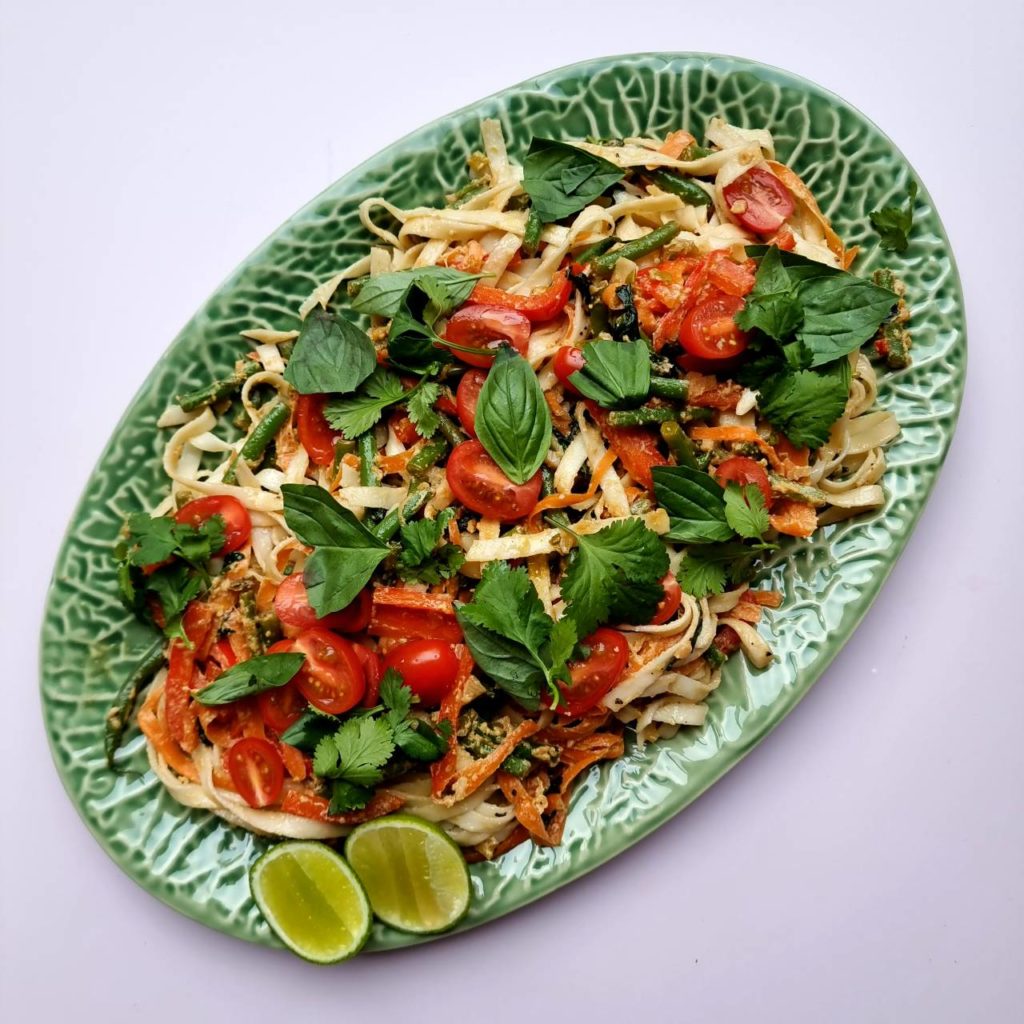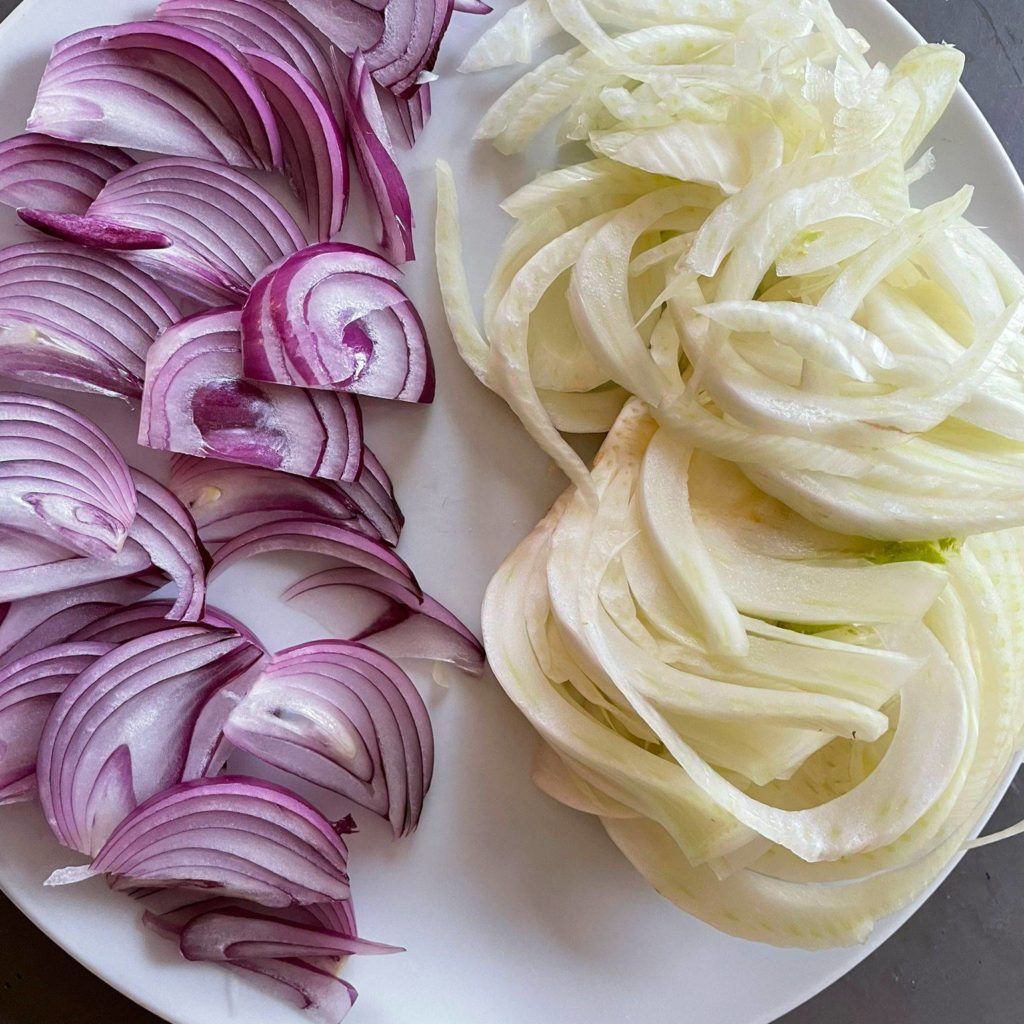If you are looking to eat more plant based and are keen on reducing food waste: The whole vegetable is a great cookbook for your collection. Sophie Gordon has dedicated almost 400 pages to the vegetable stars of all seasons. With specific no waste tips throughout the book.

What kind of cookbook is The whole vegetable?
This beautiful book wants to educate us very gently on how to use the whole vegetable. And introduce fun ways to use up the scraps and leftovers that often get discarded. Sophie diligently offers a specific ‘Waste tip’ with almost every recipe in the book. Often about how you can incorporate or swap in leftovers from your fridge into the recipe. I’m personally a big fan of this approach, as I believe in ‘working with what you have’ in the kitchen.


The build-up of The whole vegetable
The cookbook is structured by six seasons. Something we also saw in Joshua McFaddens Six Seasons and in Anna Jones’ The Modern Cook’s Year, to name a few. Which is ideal if you try to cook more seasonally. The recipes match the mood so to say. Within the seasons, there are chapters for different fruits and vegetables: the star produce of that season. With a short introduction – with a focus on no waste – and some recipes.
Recipes in The whole vegetable
The recipes are all vegan, creative and there’s lots of variation. There’s not a lot of baking or desserts though. The ingredients are widely available. Good to know: as often with vegetable books, they don’t always offer complete meals. But rather a selection of smaller dishes – or components even – that should be combined to form a full meal. So this can take a bit more effort.


What I’ve cooked so far
Whole baked harissa cauliflower
This beauty was the star of the recipes I tried from this book. The cauliflower is covered in a lovely spicy harissa dressing and roasted whole in the oven. It turns into this gorgeous deep red, hot and juicy bomb. And when you cut the cauliflower into ‘steaks’, the white interior contrasts beautifully with the exterior – both in looks and in flavour. I also roasted the cauliflower leaves (a bit shorter), which are delicious!


Spelt pizza
I truly loved this no fuss pizza recipe. The spelt dough was a breeze to make and was both easy to roll out – and to transfer to baking paper without tearing. The tomato sauce contains cherry tomatoes, tomato pasta and sundried tomatoes and was divine. I skipped the cabbage and added spinach. Fun to make and somehow felt more ‘doable’ than a regular pizza recipe. Maybe because they are quite small.



Tahini Thai noodles
This salad combines loads of vegetables and a nice tahini dressing. My version turned out a bit dry, next time I’ll add a bit more sauce.
Greek style tomatoes: rice stuffed
I really liked these yummy Greek tomatoes. As often with stuffed vegetable recipes, the amount of filling was way too much. But we enjoyed it the next day. The cooking method was perfect: the tomatoes came out lovely and soft.
Lazy day pasta and garlic kale sauce
This was an effortless pasta sauce with kale. I actually prefer kale over spinach in many recipes, because it has a deeper flavour and is slightly more bitter. I didn’t get it as smooth and creamy in my blender as I see in Sophie’s photograph. But it still tasted great! A lot of garlic goes in there, so mind your breath the next day! 😉
Coconut, white bean and celery soup
I was drawn to this recipe because I love white beans and celery. It was easy to make. I had a little bit of doubt about adding apple and coconut milk to the soup. As I feared it would be too sweet, but it wasn’t.


Did it help me reduce waste?
Well, actually, it did! In a few of the recipes I tried, I worked with the alternative vegetables that Sophie suggested. Because that’s what I had in my fridge. She is very reassuring in her swap suggestions, should you need that. I’m looking forward to trying more of the 400 recipes in this beautiful book!
Other sources of information
- See a few recipes at The Happy Foodie website
- An interview with Sophie Gordon
- Looking for more plant based cookbooks? Read my review of Ella Mills’ How to go plant based